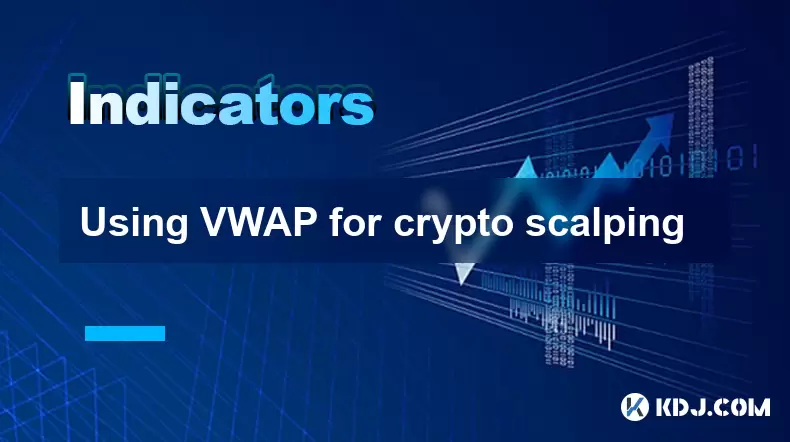-
 Bitcoin
Bitcoin $120400
1.77% -
 Ethereum
Ethereum $3615
7.90% -
 XRP
XRP $3.580
17.84% -
 Tether USDt
Tether USDt $1.001
0.06% -
 BNB
BNB $729.4
1.25% -
 Solana
Solana $179.9
5.04% -
 USDC
USDC $0.0000
0.01% -
 Dogecoin
Dogecoin $0.2311
8.22% -
 TRON
TRON $0.3226
4.04% -
 Cardano
Cardano $0.8490
12.85% -
 Hyperliquid
Hyperliquid $46.45
0.72% -
 Stellar
Stellar $0.4913
8.54% -
 Sui
Sui $4.027
2.00% -
 Chainlink
Chainlink $18.51
11.67% -
 Hedera
Hedera $0.2818
21.51% -
 Avalanche
Avalanche $24.03
7.40% -
 Bitcoin Cash
Bitcoin Cash $508.5
2.90% -
 Shiba Inu
Shiba Inu $0.00001496
3.24% -
 UNUS SED LEO
UNUS SED LEO $8.961
1.83% -
 Toncoin
Toncoin $3.264
3.13% -
 Litecoin
Litecoin $104.6
8.15% -
 Polkadot
Polkadot $4.389
6.11% -
 Uniswap
Uniswap $9.924
10.63% -
 Monero
Monero $337.9
0.49% -
 Pepe
Pepe $0.00001376
2.79% -
 Bitget Token
Bitget Token $4.830
2.46% -
 Ethena USDe
Ethena USDe $1.001
0.05% -
 Dai
Dai $1.000
0.02% -
 Aave
Aave $325.2
1.66% -
 Bittensor
Bittensor $423.7
-0.85%
Using VWAP for crypto scalping
VWAP helps crypto scalpers identify entry and exit points by showing the average price weighted by volume, guiding decisions in fast-moving markets.
Jul 16, 2025 at 04:14 pm

Understanding VWAP and Its Relevance to Crypto Scalping
VWAP, or Volume Weighted Average Price, is a powerful analytical tool used extensively in trading, especially in fast-moving markets like cryptocurrency. It calculates the average price of an asset weighted by volume over a specific time period. For scalpers who aim to make small profits from rapid trades, VWAP serves as a reliable benchmark for identifying potential entry and exit points.
In crypto scalping, where timing and precision are crucial, VWAP helps traders assess whether the current price is above or below the average value, factoring in how much volume has been traded at different price levels. This can provide insights into short-term market sentiment and help identify momentum shifts that scalpers can exploit.
How VWAP Works in Practice
The VWAP calculation involves multiplying the price of each trade by the volume of that trade, summing up these values, and then dividing by the total volume over the same period. While most trading platforms perform this calculation automatically, understanding the mechanics behind it allows traders to interpret its movements more effectively.
For example, during a high-volume breakout in Bitcoin, a trader might notice that the price is significantly above VWAP, suggesting strong buying pressure. Conversely, if the price drops below VWAP after a spike, it may indicate weakening demand. These signals become crucial for scalpers looking to ride short-lived trends.
It's important to note that VWAP resets at the beginning of each trading session, typically daily in traditional markets. In 24/7 crypto markets, traders often use rolling VWAP indicators set on specific intervals such as 1 hour or 4 hours.
Setting Up Your Trading Platform for VWAP-Based Scalping
To implement VWAP-based strategies effectively, you need a compatible trading platform with real-time data and customizable charting tools. Platforms like TradingView, Binance, or Bybit offer VWAP overlays directly on candlestick charts.
Here’s how to configure your setup:
- Open your preferred trading platform and navigate to the chart section.
- Select the cryptocurrency pair you're interested in (e.g., BTC/USDT).
- Look for the indicator tab and search for “VWAP”.
- Add the indicator to your chart. Most platforms will display it as a single line overlay.
- Customize the settings if necessary. Some traders prefer multiple VWAP lines based on different timeframes.
Once set up, monitor how the price interacts with the VWAP line. Consistent price action above VWAP may signal bullish dominance, while frequent dips below suggest bearish control — both are valuable signals for scalpers.
Integrating VWAP with Other Indicators for Better Accuracy
While VWAP alone offers useful insights, combining it with other technical indicators enhances its reliability. Popular combinations include:
- Using VWAP with RSI: When price is above VWAP and RSI is rising but still below 70, it suggests healthy upward momentum without being overbought.
- Pairing VWAP with EMA: If the short-term EMA crosses above VWAP, it could confirm a bullish trend.
- Adding Volume Profile: This provides additional context about where most trading activity occurred, complementing VWAP's weighted average.
These combinations allow scalpers to filter out false signals and focus on higher probability trades. For instance, a scalper might wait for the price to retest VWAP after a pullback, combined with increasing volume and a bullish RSI divergence, before entering a long position.
Executing Scalp Trades Using VWAP Signals
Scalping using VWAP generally follows a few key patterns:
- Trend Following: Enter when price pulls back to VWAP in a strong uptrend or downtrend.
- Mean Reversion: Buy when price drops significantly below VWAP expecting a bounce, or sell when it spikes far above expecting a pullback.
- Breakout Confirmation: Use VWAP to validate breakouts — if price breaks above VWAP with strong volume, it could signal a continuation.
Each trade should have clear entry, stop-loss, and take-profit levels. For example, a scalp trade initiated near VWAP in a bullish trend might place a stop just below the VWAP line and target a small profit within a few ticks or percentage points.
Risk management remains critical. Since scalping involves many trades, even small losses can accumulate quickly. Always define your risk per trade, typically no more than 0.5% to 1% of your account balance.
Common Mistakes to Avoid When Using VWAP for Scalping
Even experienced traders can fall into pitfalls when applying VWAP in fast-paced crypto markets:
- Over-reliance on VWAP: Using VWAP in isolation can lead to poor decisions. Always combine it with other tools.
- Ignoring Market Conditions: VWAP behaves differently in ranging versus trending markets. Understand the context before making a trade.
- Misinterpreting Time Frames: VWAP on a 1-minute chart behaves very differently from one on a 1-hour chart. Choose the timeframe that aligns with your strategy.
- Not Adjusting VWAP Settings: Some traders try to tweak VWAP too much. Stick to default unless you have a tested reason to change it.
By recognizing these issues early, scalpers can avoid costly errors and improve their win rate.
Frequently Asked Questions
Q: Can VWAP be used effectively in sideways or range-bound crypto markets?
Yes, VWAP can still provide value in sideways markets by highlighting support and resistance zones. When the price approaches VWAP in a range, it often acts as a magnet, offering potential reversal opportunities.
Q: How does VWAP differ from a regular moving average?
Unlike simple moving averages, VWAP incorporates volume into its calculation, making it more reflective of actual market behavior. Regular moving averages treat all prices equally regardless of volume.
Q: Is VWAP suitable for longer timeframes like day trading or swing trading?
While primarily designed for intraday use, some traders adapt VWAP for multi-day strategies by adjusting the period. However, its effectiveness diminishes in longer timeframes due to reduced sensitivity.
Q: What are some alternative volume-weighted indicators similar to VWAP?
There’s TWAP (Time Weighted Average Price), which focuses on time rather than volume, and VWMA (Volume Weighted Moving Average), which applies weighting to a moving average instead of resetting daily.
Disclaimer:info@kdj.com
The information provided is not trading advice. kdj.com does not assume any responsibility for any investments made based on the information provided in this article. Cryptocurrencies are highly volatile and it is highly recommended that you invest with caution after thorough research!
If you believe that the content used on this website infringes your copyright, please contact us immediately (info@kdj.com) and we will delete it promptly.
- Bitcoin Whale's $9.6B Galaxy Digital Move: Profit-Taking or Strategic Play?
- 2025-07-18 14:30:12
- Alchemy Pay, Crypto-Finance, and Hong Kong: A Budding Hub?
- 2025-07-18 14:30:12
- Dave Portnoy's XRP Regret: A Crypto Dump Disaster?
- 2025-07-18 15:10:12
- XRP Price Surges to 7-Year High: Expert Predictions and Market Analysis
- 2025-07-18 15:10:12
- Crypto Market Cap Nears $4T: Can It Rival the Biggest Companies?
- 2025-07-18 14:50:12
- Binners Alpha, TrutaAI, Andken ERA: A New Era?
- 2025-07-18 14:50:12
Related knowledge

Advanced RSI strategies for crypto
Jul 13,2025 at 11:01am
Understanding the Basics of RSI in Cryptocurrency TradingThe Relative Strength Index (RSI) is a momentum oscillator used to measure the speed and chan...

Crypto RSI for day trading
Jul 12,2025 at 11:14am
Understanding RSI in the Context of Cryptocurrency TradingThe Relative Strength Index (RSI) is a momentum oscillator used to measure the speed and cha...

Crypto RSI for scalping
Jul 12,2025 at 11:00pm
Understanding RSI in the Context of Crypto TradingThe Relative Strength Index (RSI) is a momentum oscillator widely used by traders to measure the spe...

What does an RSI of 30 mean in crypto
Jul 15,2025 at 07:07pm
Understanding RSI in Cryptocurrency TradingRelative Strength Index (RSI) is a momentum oscillator widely used in cryptocurrency trading to measure the...

What does an RSI of 70 mean in crypto
Jul 13,2025 at 06:07pm
Understanding the RSI Indicator in Cryptocurrency TradingThe Relative Strength Index (RSI) is a widely used technical analysis tool that helps traders...

Does RSI work in a bear market for crypto
Jul 16,2025 at 01:36pm
Understanding RSI in Cryptocurrency TradingThe Relative Strength Index (RSI) is a momentum oscillator used by traders to measure the speed and change ...

Advanced RSI strategies for crypto
Jul 13,2025 at 11:01am
Understanding the Basics of RSI in Cryptocurrency TradingThe Relative Strength Index (RSI) is a momentum oscillator used to measure the speed and chan...

Crypto RSI for day trading
Jul 12,2025 at 11:14am
Understanding RSI in the Context of Cryptocurrency TradingThe Relative Strength Index (RSI) is a momentum oscillator used to measure the speed and cha...

Crypto RSI for scalping
Jul 12,2025 at 11:00pm
Understanding RSI in the Context of Crypto TradingThe Relative Strength Index (RSI) is a momentum oscillator widely used by traders to measure the spe...

What does an RSI of 30 mean in crypto
Jul 15,2025 at 07:07pm
Understanding RSI in Cryptocurrency TradingRelative Strength Index (RSI) is a momentum oscillator widely used in cryptocurrency trading to measure the...

What does an RSI of 70 mean in crypto
Jul 13,2025 at 06:07pm
Understanding the RSI Indicator in Cryptocurrency TradingThe Relative Strength Index (RSI) is a widely used technical analysis tool that helps traders...

Does RSI work in a bear market for crypto
Jul 16,2025 at 01:36pm
Understanding RSI in Cryptocurrency TradingThe Relative Strength Index (RSI) is a momentum oscillator used by traders to measure the speed and change ...
See all articles

























































































